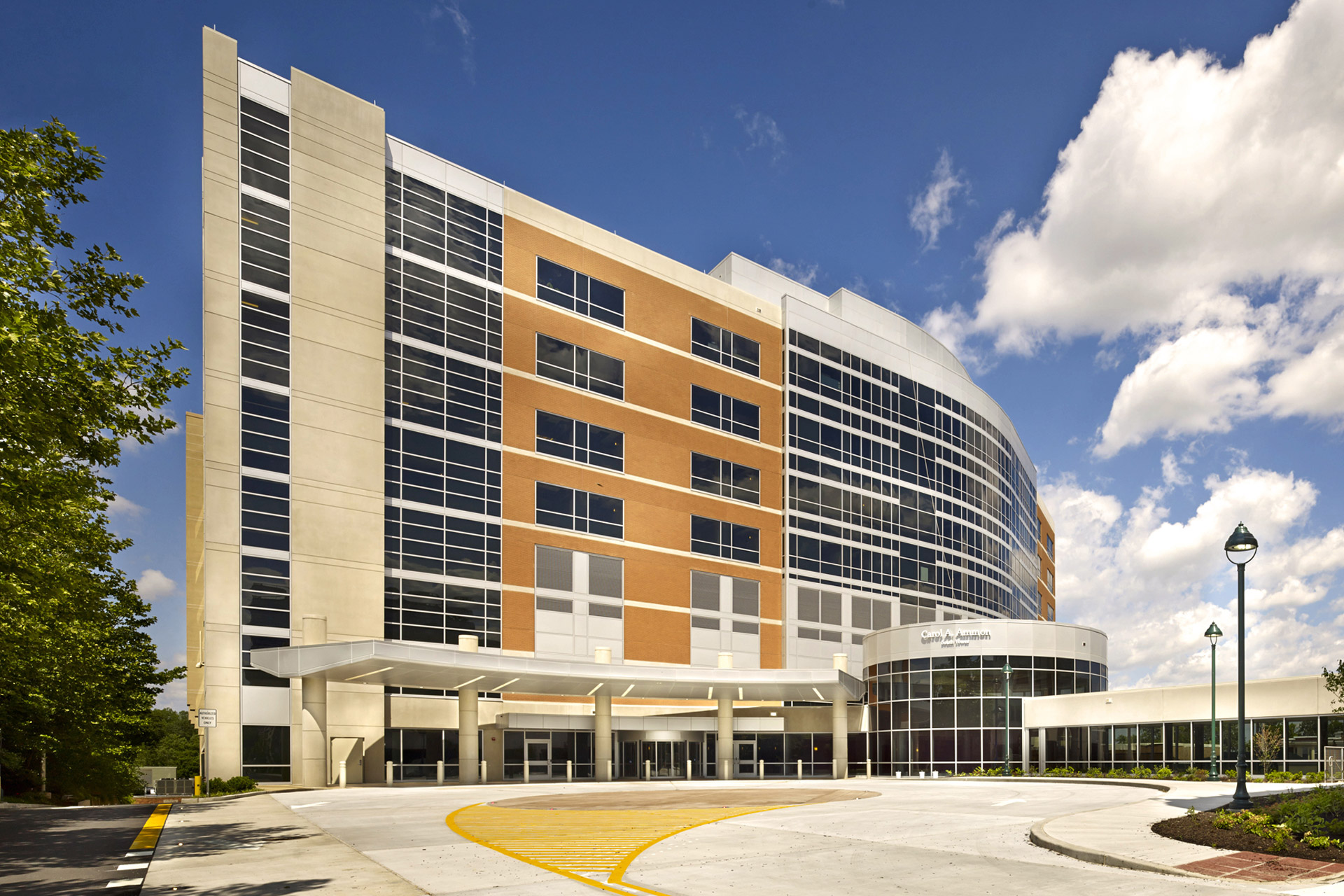Wilmington Hospital: News, Updates & More!
Is Wilmington Hospital truly the cornerstone of healthcare it claims to be, or is it a complex tapestry woven with threads of both excellence and areas demanding careful attention? The reality is that Wilmington Hospital, a vital institution serving the Delaware community, undeniably plays a multifaceted role, its impact felt through the lives it touches and the challenges it navigates. Examining this institution requires a nuanced perspective, one that delves beyond surface-level pronouncements and explores the realities within its walls and the broader implications of its presence.
Nestled within the heart of Wilmington, Delaware, Wilmington Hospital has long been a familiar name, a place synonymous with medical care for generations. It stands as a central hub for residents seeking a wide range of health services, from emergency treatments to specialized surgeries. Its reputation, however, like that of any major medical facility, is a constantly evolving one, shaped by advancements in medical science, changing demographics, and the ever-present demands of an evolving healthcare landscape. Wilmington Hospital's ability to adapt and innovate is crucial to its continued relevance and success within the region.
| Data Point | Details |
|---|---|
| Institution Name | Wilmington Hospital |
| Location | Wilmington, Delaware, USA |
| Type | Acute Care Hospital |
| Services Offered (Illustrative) | Emergency Services, Cardiology, Oncology, Surgery, Obstetrics and Gynecology, Pediatrics, Intensive Care, Diagnostic Imaging, Rehabilitation Services |
| Affiliations (Illustrative) | ChristianaCare Health System |
| Key Departments/Units | Emergency Department, Surgical Suites, Intensive Care Units (ICUs), Cardiac Care Unit, Oncology Center, Maternity Ward, Pediatrics Department |
| Bed Capacity (Approximate, subject to change) | Varies, typically several hundred beds. Consult official hospital sources for current figures. |
| Staff (Approximate, subject to change) | Medical Professionals (Physicians, Surgeons), Nurses, Technicians, Support Staff; Thousands of Employees |
| Patient Volume (Approximate, subject to change) | Thousands of patients served annually, including emergency room visits, inpatient admissions, and outpatient appointments. |
| Special Programs/Centers (Illustrative) | Cancer Center, Heart Center, Women's Health Services, Surgical Services, Behavioral Health Services (may vary). |
| Technology and Equipment | Modern diagnostic imaging (MRI, CT Scans, X-ray), Robotic Surgery, Specialized surgical equipment, Electronic Health Records (EHR) systems. |
| Accreditation & Certifications (Illustrative) | Joint Commission Accreditation, other specialized certifications depending on departments. Always verify current status. |
| Community Outreach | Health screenings, education programs, partnerships with local organizations (details vary). |
| Challenges | Managing patient volume, Staffing shortages (potentially), Maintaining state-of-the-art equipment, Adapting to healthcare regulations and changes, addressing health disparities, ensuring patient safety, data security. |
| Impact on Local Economy | Significant employer, contributes to local tax base, attracts related businesses. |
| History (Brief Overview) | Established to serve the community, has evolved through mergers, expansions, and technological advancements over decades. (Specific history varies; consult official resources for detailed information). |
| Future Trends & Considerations | Integration of telehealth, focus on preventative care, advancements in personalized medicine, addressing health equity, evolving payment models in healthcare. |
| Reference Website (For accurate, up-to-date information) | ChristianaCare Official Website (This is a general example, always verify specific affiliations and details). |
The landscape of healthcare in Wilmington, Delaware, is constantly shifting, with new challenges and opportunities emerging regularly. Wilmington Hospital finds itself at the epicenter of these changes. The economic factors within the community significantly impact the hospital's operation. Shifts in the local job market can affect the insurance coverage of patients, thus influencing the hospital's financial stability and its ability to provide care. Simultaneously, advancements in medical technology, from minimally invasive surgery techniques to advanced diagnostic tools, require continual investment in resources, training, and infrastructure. Keeping pace with these rapid changes is a formidable task, yet one that is essential to maintaining a high standard of care.
The delivery of healthcare, particularly within a large hospital setting, is a complex undertaking, involving many different facets. The staff at Wilmington Hospital, including physicians, nurses, technicians, and support personnel, work collaboratively to provide comprehensive patient care. The quality of this care is often measured by several factors, encompassing patient satisfaction, clinical outcomes, and adherence to safety protocols. Stringent protocols are necessary to address risks such as hospital-acquired infections. Ongoing staff training, incorporating the latest medical advancements, and the establishment of effective communication channels are critical components of a functional and patient-centered healthcare system.
One of the primary concerns for any hospital, including Wilmington Hospital, is ensuring the safety and well-being of its patients. This involves the prevention of medical errors, the effective management of infections, and maintaining a safe environment throughout the facility. The implementation of rigorous safety protocols, continuous quality improvement initiatives, and a focus on patient-centered care are all essential elements in creating a safe and trusted environment for patients and their families. The use of technology, such as electronic health records, can also play a key role in improving patient safety by reducing the potential for errors.
Beyond the immediate provision of medical treatment, Wilmington Hospital's role extends to community health and wellness. Hospitals often have initiatives designed to improve the overall health of the population they serve. This can range from health education programs and screenings for common diseases to partnerships with local organizations to address specific health needs. Addressing health disparities, where certain populations experience poorer health outcomes due to social or economic factors, is another important aspect of a hospital's community commitment. Efforts to ensure equal access to care and tailored health programs demonstrate the vital importance of Wilmington Hospital's wider role.
The financial considerations for Wilmington Hospital, as with all hospitals, are significant. The cost of providing healthcare, including staffing, equipment, medications, and facility maintenance, continues to rise. Revenue is typically generated through insurance reimbursements, government funding, and patient payments. The hospital's financial performance is subject to shifts in the healthcare market, payment models, and regulatory requirements. Hospitals often employ complex financial strategies to manage their expenses, ensure adequate funding for patient care, and maintain their long-term sustainability. Transparent financial practices and efficient resource management become extremely vital to ensuring the continuity of operations and the delivery of high-quality medical services.
The integration of technology has transformed nearly every aspect of modern healthcare, and Wilmington Hospital is no exception. Electronic health records (EHRs) are used to store patient information, improve the accuracy of medical records, and enhance communication between healthcare providers. Telehealth, which allows patients to consult with doctors remotely, is becoming increasingly popular, particularly for follow-up appointments and consultations with specialists. Advanced diagnostic imaging technologies, such as MRI and CT scans, provide detailed images that aid in diagnosis and treatment planning. Wilmington Hospital must remain current with the advancements and developments in technology, ensuring the use of cutting-edge technologies and its integration into efficient processes.
The future of Wilmington Hospital and the healthcare landscape overall will be marked by several important trends. An increased focus on preventative care, designed to identify health risks early and prevent disease. The rise of personalized medicine, where treatments are tailored to the individual needs of each patient. The continued integration of technology, including artificial intelligence and machine learning, to improve diagnosis and treatment. Addressing health equity, where efforts are made to reduce disparities in health outcomes among different populations, is also a key priority. Wilmington Hospital must remain agile and responsive to these trends, anticipating future healthcare demands and adapting its strategies to meet the evolving needs of the community.
The effectiveness of Wilmington Hospital can be measured in several ways. Patient outcomes, encompassing survival rates, recovery times, and the management of chronic diseases. Patient satisfaction, which reflects the experiences of patients with the care they receive. The quality of care, measured through clinical indicators, such as infection rates and complication rates. The hospital's financial stability, which ensures its ability to continue serving the community. Compliance with regulatory standards and accreditation requirements. All of these components taken together show how effective a hospital can be for its community.
The relationship between Wilmington Hospital and the community it serves is a mutually dependent one. The hospital relies on the support of the community to maintain its operations, while the community relies on the hospital for access to essential medical care. Building and maintaining trust within the community is crucial, which is done through transparency, clear communication, and a commitment to patient-centered care. Community involvement in hospital governance, participation in advisory boards, and support for fundraising initiatives show the strength of this relationship. The success of Wilmington Hospital is directly linked to the health and well-being of the community it serves.
The challenges that Wilmington Hospital faces are numerous. One of the most common challenges involves managing the increasing demands for healthcare services, with an aging population and the rising prevalence of chronic diseases. Maintaining a qualified and skilled workforce, including nurses and physicians, can be difficult due to shortages and competition. Maintaining financial stability while meeting the rising costs of healthcare and managing the complexities of insurance reimbursement are common concerns. Compliance with complex regulatory requirements, including patient safety, data privacy, and quality standards, also adds pressure. Wilmington Hospital's ability to effectively address these challenges directly influences its long-term viability and its capacity to deliver high-quality care.
In the realm of healthcare, the importance of research cannot be overstated. Research helps to produce new treatments, improve patient outcomes, and advance the understanding of diseases. Wilmington Hospital often engages in clinical trials, where new drugs and therapies are evaluated, and research studies, which contribute to medical knowledge. Participation in research enhances the hospital's reputation, attracts leading medical professionals, and provides patients access to the latest treatments. Research initiatives help to enhance the hospital's commitment to quality, innovation, and improving healthcare outcomes within the community.
The physical environment of Wilmington Hospital also contributes to the overall patient experience. Modern, well-maintained facilities create a more comfortable and welcoming atmosphere for patients and their families. Access to amenities, such as private rooms, comfortable waiting areas, and convenient parking, can help to reduce stress and anxiety. A clean, safe environment, following infection control protocols, is crucial to preventing the spread of diseases. Planning efforts that focus on a thoughtful design and efficient layout of facilities contribute to a positive experience for both patients and staff, aiding in the delivery of healthcare.
In conclusion, Wilmington Hospital stands as a significant healthcare provider for the region. From emergency treatment to specialized medical procedures, the hospital continues to play a critical role in the healthcare ecosystem. The hospital's impact stretches beyond the immediate patient encounter, including contributions to the local economy, and community engagement. Maintaining excellence requires Wilmington Hospital to adjust to shifts in the healthcare environment, embrace new technologies, and commit to the evolving demands of patient care. Its future will depend on the ongoing balance of innovation, community engagement, and a relentless focus on the health and well-being of the people it serves.


